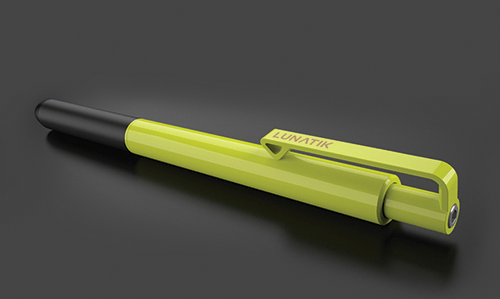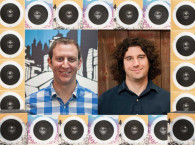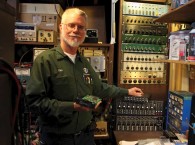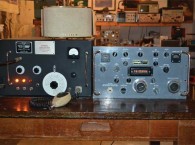
director of Coleridge Design Associates.
SHANNON BECKER: Tell us a little about your background and where you live.
GEOFF BOYD: I have lived in San Jose, CA, since 2006. But, I hail from the Caribbean and spent most of my life living in UK. I am a 1970 Commonwealth Scholar and Physics and Chemistry graduate of the University of Leeds, West Yorkshire, England, with post-graduate and post-doctoral research experience in Material Science at the Oxford University, Oxford, England. Leaving academia in the early 1980s I co-founded Memotech, one of the UK’s leading first-generation PC companies. I then led NXT, the company that introduced the world’s first computer interactive Videowall display systems, which included marketing and selling these high technology display systems into Japan.
In 2010, after more than 10 years at NXT specializing in new business development, technology innovation, and intellectual property licensing, I rekindled my entrepreneurial activities and founded Silicon Valley-based Coleridge Design Associates, which has the objective of building a team of designers, scientists, and engineers who specialize in creating intellectual property (IP) by invention and innovation aimed primarily at the consumer electronics (CE) and green energy (GE) markets. At its core is “Invention by Design” rather than “Invention by Serendipity” with the skill and experience to recognize the difference between a trip to Brighton (the seaside) and a trip to Mars.
SHANNON: What was your first personal project? Why did you build it? Is it still in use?
GEOFF: My exposure to electronics was as a postgraduate student in the
Department of Metallurgy, Oxford University, where those so inclined built their own electronics equipment for lab experiments. I took to this like a duck to water and became quite proficient at electronics design and construction as well as sheet metal work for enclosures. My first personal project was to build a functioning version of Peter Walker’s Quad 405 current dumping amplifier. The design with full schematics was published in a December 1975 issue of Wireless World. I was fascinated with the concept of the reactive bridge balancing technique used in the design. In fact, I remember doing a second-order calculation to fine tune the inductor’s resistance of the bridge. I added Douglas Self’s advanced preamplifier with discrete LED-biased op-amps, which was also published in Wireless World in 1976 as well as a discrete Class A headphone amplifier also published at the time. I laid out the PCBs using the “pen and tape” method and etched it in the lab. No purchased kits here! I fabricated the sheet metal enclosure under the expert tutelage of John Short, who ran the student workshop in the Department of Metallurgy at Oxford for many years. This integrated amplifier had a pride of place in my living room for many years. It eventually gave way to a Yamaha AV receiver over 10 years later.
SHANNON: You have more than 30 years of experience in technology and audio visual innovation. How did you get started?
GEOFF: In 1978 I moved from the Department of Metallurgy to the Engineering Department at Oxford University as a post doctorate researcher in mechanical properties of materials at elevated strain rates. This required recording data for tests lasting a few milliseconds with data rates at tens of MHz. Though my passion for music and interest in audio electronics remained, my electronics interest and expertise shifted to computer and memory electronics design.
SHANNON: What made you venture out on your own and start Coleridge Design?
GEOFF: I started as an entrepreneur during those heady days of the first personal computers in 1979. I plotted to start a hardware and software business with another researcher at Oxford, Robert Branton, who worked with the programming research group at Oxford. It wasn’t a difficult decision to branch out because at the time Margaret Thatcher had just become prime minister and the cushy jobs at the universities were disappearing fast. By 1981, the writing was on the wall and tenure was going to end, so I decided to forget about an academic career and start my own tech business. Our first business, Memotech, was making add-on memory packs for the Sinclair ZX81. Initially, I designed the products while still at the Engineering Department and then I jumped ship as soon as the business roared to a massive success.
The story of Memotech is interesting. The ZX81 came with 1 KB of memory, and the first thing the user needed was a 16-KB memory pack. When dynamic random access memory (DRAM) ICs were purchased, they needed to be fully tested in circuits with demanding tests, which typically lasted 3 to 4 min. In the UK, there were two contract manufactures who made Sinclair’s add-on packs—Thorn EMI and AB Electronics. They used GenRad testing machines that cost over $1 million each. You couldn’t speed up the test, so the throughput of these machines was limited. Memotech couldn’t afford these machines to test its MemoPaks, as they were called, so we built our own testing rigs using Intel 8048 8-bit microcontrollers with a complete memory test system that cost us less than $500! The MemoPaks were housed in black anodized extrusion enclosures and had a reputation for quality. Needless to say, Memotech cornered the market on Sinclair ZX81 memory add-ons, and we were able to build a multimillion-pound business within one year. I remember that we had UK retailers WH Smith, Boots, and others on allocation, and we could sell everything that we could make. In the US, the ZX81 was launched as the Timex 1000, and we experienced explosive growth and success. I hastily left the university and never had the time to submit my D-Phil thesis from the work in the Metallurgy Department at Oxford, although my research was peer reviewed and published at the time.
At Memotech, we thought all we had to do was produce a first-class product with a great design and specifications, and the buyers we had on allocation would come to us. So, we designed and manufactured the Memotech MTX 512 home computer, which was launched in 1983. We were competing against BBC Microcomputer System and never stood a chance in the UK. The buyers never came and the level of marketing required was beyond our resources, so our backers eventually pulled the plug in 1986. That was a huge lesson. I bought what was left of the business and relaunched Memotech Computers using high-resolution digital video technology that had been developed at Memotech to a new market of videowall technology. We dominated the supply of videowall controllers for nearly 10 years, from 1986 to 1995.
Another lesson I learned from 1995 to 1999 was that “things change.” We miscalculated, thinking that to have large LCD-TVs one would need to “tile” smaller displays. In 1995, it was generally accepted in the display industry that one could never manufacture LCDs larger than approximately 23” diagonal because of glass-handling issues. Another bit of wisdom at the time was that LCDs would quickly transition from amorphous silicon active matrix LCD (AMLCD) to low-temperature polysilicon technology (LTPS), which would mean the driver electronics used with AMLCD would be eliminated. And a further bit of wisdom at the time was that the yield of LCDs would never exceed about 70%. I launched Coleridge Design in 1996 to create a business to tile partially defective LTPS 23” to 25” LCD panels into 100” very large screen flat panel displays (VLS-FPDs) based on these false assumptions.
Needless to say, the business never took off as technology changed making all three assumptions on which the business was based wrong. And in 1999, I joined NXT, the UK flat-panel speaker IP company, as a display consultant to launch SoundVu where “the screen is the speaker.” For 10 years, I worked at NXT with a fabulous team of colleagues all passionate about music and sound reproduction. I worked primarily in IP business development and sales. It was a valuable experience that brought me in contact with all the great audio and consumer electronic companies of the world. I did contribute on the technology side and have a number of NXT patents to my name, but it wasn’t my day job. In 2006, the bulk of the NXT business moved to Hong Kong to be closer to its licensees and I moved to Silicon Valley to be closer to the OEMs that were licensee targets. By 2010, NXT was retrenching, having failed to make a lasting impact with its IP licensing business model, and started moving back to UK. This was my cue to relaunch my entrepreneurial career in Silicon Valley. Coleridge Design in San Jose, CA, was launched at the beginning of 2010.
SHANNON: Tell us about your work. Do the models you used 30 or even 20 years ago still function today?
GEOFF: The Coleridge Design plan is to develop IP mainly in consumer electronics audio and sound reproduction as well as in printed electronics and green energy with the “user experience” as the guiding force. I call it “inventing by design,” where I call on my extensive experience in science, technology, engineering, and mathematics (STEM) to lead a team charged with addressing neglected technology needs.
The entrepreneurial model we used in the past was based on gut feelings. We make a design and a product then put it out there to see how it sells. If the product and price was great then it would sell with moderate PR and marketing. The marketing was entirely business-to-business (B2B) or business-to-consumer (B2C), depending on the product and the target market. The Internet changed the model slightly in the last 20 years but not significantly. Today, we have a fundamental shift with the advent of social media, which in effect means that our marketing effort is dominated by consumer-to-consumer (C2C). Another significant change is the advent of Kickstarter and crowdfunding. In the context of making and taking products to market, I view it as an extension of C2C where you can test the market before you build your product. Our case with Coleridge Design and the aCUBE is a classic case of using Kickstarter to test the market and fail early.

SHANNON: Your most recent innovation is the aCUBE. How did this design come to be? What makes it so unique?
GEOFF: In about 2004, Dr. Graham Bank, a colleague at NXT, made a breakthrough in loudspeaker technology inventing the balance mode radiator (BMR) loudspeaker. The BMR is a full-range loudspeaker driver, which provides outstanding performance. My personal view is that this is the most significant advance in loudspeaker technology since 1925 when Rice & Kellogg invented the loudspeaker as we know it today.
BMR technology has appeared in many stand-alone loudspeaker products. However, these have largely been in either expensive Hi-Fi or in performance compromised speaker systems. The advantages of BMR speaker technology are many, but primarily relate to its pinpoint accuracy yet wide dispersion and extended frequency range. Together this allows the design realization of a high-performance, single-drive system such as the aCUBE.
This project takes the 4.5” BMR full-range loudspeaker drivers from CSS, a company owned by my former NXT colleagues, Dr. Graham Bank and Jon Vizor, and marries these drivers with beautiful handmade clear-cast acrylic 6.5” cube enclosures and the latest Class-D amplifier technology from Maxim Integrated. The result: The best in-class performance speakers optimized as near-field active loudspeakers that are stylish, exceptional quality, affordable, and convenient.
The use of acrylic is quite by accident. I have tended to use aluminum extrusions in most of my designs. The MemoPak 64K, the Memotech MTX 512 computer, and the Memotech DDFS videowall controllers were all made with black anodized aluminum preferably brushed. So we designed and prototyped a range of BMR speakers in anodized aluminum enclosures. However, before we made the protototypes, we built some acrylic enclosures as proofs of concept to test the BMR drivers from Cotswold Sound Systems. They sounded fabulous. However, when we used the aluminum prototypes, the enclosures rang like a bell and we had to take drastic measures to dampen the sound. Due to my materials science background, I realized that the acrylic sounded fabulous because of the material’s high internal damping over the entire audio bandwidth due to viscoelasticy. That was the reason the relatively thin walled enclosures sounded so well. Once we decided to make the aCUBE out of acrylic sheet, we had to find a supplier who could make perfect cubes using CNC and the latest techniques in bonding and polishing. The beauty in cast acrylic sheet is how it renders the light through perfect edges.
I have to confess, the aCUBE Kickstarter project was a bit of a Trojan horse in an attempt to gauge whether the consumer electronics market has an appetite for a new audio brand in quality sound reproduction and whether crowdfunding is a viable route to launching such a brand. It didn’t take long to see that in its present form, the Coleridge Design brand will not be a viable vehicle for launching the groundbreaking, disruptive audio technologies as I envisaged. Another valuable lesson learned from this early failure is that very little has changed and launching a new brand is still all about marketing, albeit nowadays C2C social media marketing.

SHANNON: Describe your touch-pen technology and how it works.
GEOFF: A couple of weeks after I got my first iPhone in 2007, I designed and built a capacitive-touch pen using conductive silicone rubber to emulate the finger. There are two requirements for a capacitive touch pen. The first is that it must form a flat conductive area of about 0.5 to 1 cm2 on the touch glass surface. The second is that this conductive area must be electrically connected to an electrical “sink” such as the human body or “large” lump of metal. The first touch pen that we built had a mild steel core of about 100-mm long × 3-mm diameter embedded in a silicone rubber “pen” about 110-mm × 8-mm diameter. We built a few hundred prototypes, but it wasn’t viable because there was no IP protection.
So we came up with a design in which the rubber grip of a gel pen was made out of conductive silicone rubber and modified so that when the pen refill was retracted the silicone rubber tip would collapse and could be used as a touch pen even when the pen body was plastic because the grip would conduct through the fingers.
Coleridge Design licensed the technology exclusively to Scott Wilson at Lunatik.com who launched it on Kickstarter, his second project after his very successful TikTok project that created the Lunatik Brand. (For more information, visit www.kickstarter.com/
projects/1104350651/lunatik-touch-pen-the-evolution-of-thestylus.)
This is the licensing business model that we generally want to use for the IP we develop. The key is to make a whole product that is ready for market. Most of the time it is not that easy because the technology is not a “whole product” and needs one or more entities in the supply chain to complete the product. In many cases, it might be an OEM or brand to take the product to market as well as suppliers to change the way they make products. That is very hard and needs to be driven by the OEM. That was the reasoning behind trying to make Coleridge Design an audio brand. If one cannot take it to market then one has to make it worth the while of the OEM or brand to get on board. That generally means some degree of exclusivity. Say a time-limited exclusivity or even an outright sale or fully paid up license.
SHANNON: What do you see as some of the greatest audio innovations of your time?
GEOFF: In the last 40 years, we have come a long way in improving the user experience but only if we use convenience as the main metric. To speak to that, I would say three of the great innovations of “my time” include: The Digital Audio revolution, which has led to surround sound and iTunes; the Class-D filterless audio amplifier; and distributed mode loudspeaker (DML) culminating in Dr. Graham Bank’s BMR. However, in so many ways, we have gone backward in the user experience of audio, mostly in the name of convenience. I recall valve amplifier systems from the 1960s and 1970s with very large speakers, some of them built into the users’ homes, which outperform most systems I have heard in the last 20 years.
How do we get great-sounding audio out of relatively “small” enclosures? I clearly remember an encounter I had with Michael Gerzon, who it would be reasonable to say invented surround sound. It was sometime in 1975, just after he had published his work on surround sound in Wireless World in December 1974. I was invigilating as a student’s part-time job on Friday evenings at the Radcliffe Science Library in Oxford and Michael, who was at the Oxford Mathematics Institute, had reserved some books on Matrix theory. I spotted his name on the ticket and when he came to collect his books I pumped him with questions on surround sound. I came away with two pieces of information, which I clearly remember to this day. The first was that the minimum number of speakers required for full surround sound would be six at the corners of an octahedral arrangement. Two at the top front, one at the bottom center, two at the bottom back, and one at the top center. But the bad news, he said, was that for the equations to work they all had to be full-range speakers (i.e., including bass). This has remained with me for 40 years.
SHANNON: Are you currently working on or planning any other speaker-related projects?
GEOFF: Coleridge Design has been developing IP on three audio related projects:
A personal surround-sound headphone system (PX3) based on design work we did on motorcycle helmet audio (www.youtube.com/watch?v=ilfSA_FoiaU). The new development seeks to achieve the same Helmet-Blaster unbelievable surround-sound performance in similar form factor and power requirements as conventional headphones.
The magnetless voice coil actuator (M-LVCA), which is a green initiative to eliminate rare earth magnets in loudspeaker motors at reduced cost without loss in performance and increase in weight. This is based on recent advances in insulated iron soft magnetic composites (SMCs) coupled to audio digital signal processing. It is scalable to all sizes of loudspeaker motor. There are possible spin off applications in electric vehicle technology
The extended range flat-panel bass (flatBASS) loudspeaker with active shallow enclosure technology. My 1975 encounter with Michael Gerzon makes this what I consider the holy grail of loudspeaker technology!
SHANNON: Can you recommend any useful new parts or promising technologies to audioXpress readers? Anything you’re using now that you think readers should know about?
GEOFF: I would recommend Graham Bank’s BMR loudspeaker drivers from Cotswold Sound Systems mounted in naturally damped “thin-walled” acrylic enclosures. Thin-walled clear cast acrylic sheet typically 4-mm thick for 3” to 4” cubes, say 6-mm thick up to 6” to 8” cubes and say 10-mm thick up to 12” to 15” cubes.
There has been rapid improvement in lowering the cost and increasing the performance of the latest filterless class-D amplifiers from Maxim Integrated and Texas Instruments (TI). They are very efficient and worth evaluating in new designs but good quality power supply design is critical. Also the bridge tied load (BTL) output configuration of modern Class-D is pretty much mandatory but care must be taken to switch both ends when using speaker switch boxes.
Another new technology worth considering in modern audio designs is the use of supercapacitors from, say, Maxwell and PowerStor, particularly for battery designs, which are now really viable with the new super-efficient filterless Class-D amplifiers. Audiophiles love the concept of a battery-powered audio amplifier! Quiescent current of these amplifiers is the key efficiency metric. Supercapacitors have drawn much attention in recent years due to their high power density, reversibility, and long cycle life. They are found in a wide range of applications from smart phones to electric vehicles and the rapid price reduction in recent years has made them affordable in applications like this.
These low-cost supercapacitor devices are typically 2.5 to 3 V maximum so one needs to incorporate active balancing when these devices are used in series. For example, AA batteries would be configured in series for relatively high peak powers into 4-O loads from typically 15 or 12 V (primary or rechargeable respectively). However, particularly when partially discharged, these battery stacks are very poor at delivering the intermittent heavy-power transients required for high quality audio. A series bank of active balanced supercapacitors can supplement the battery pack and completely counteract this.
SHANNON: Do you have any advice for audioXpress readers who want to build their own sound systems?
GEOFF: In the words of Nike, “Just do it.” I don’t mean to be flippant, but I firmly believe that you really learn when you make stuff. I include circuit simulations in “making stuff.” I tend use TI’s TINA-TI and other free tools for analog simulation. I don’t breadboard until I have it working in simulation. But, in the end, it has to be prototyped and tested. In analog audio electronics, this is getting really hard as we move to smaller fine-pitch ICs. My advice is to make use of manufacturer’s reference board designs and take a stab at laying out your designs using the many free tools available from PCB fabricators. I tend to use old fashioned axial and radial devices for breadboarding small sections, but more often than not, the working simulations allows one to go straight to SMD PCBs, typically 0603 passive devices for prototypes and preproduction only moving to 0402 if board space is an issue. Another golden rule I have for analog audio is to always use full differential designs, particularly when interfacing to digital ICs with analog outputs. aX
This article was originally published in audioXpress, April 2013.






